Wingspan 11 m Introduced 1954 | Length 11 m First flight August 3, 1953 | |
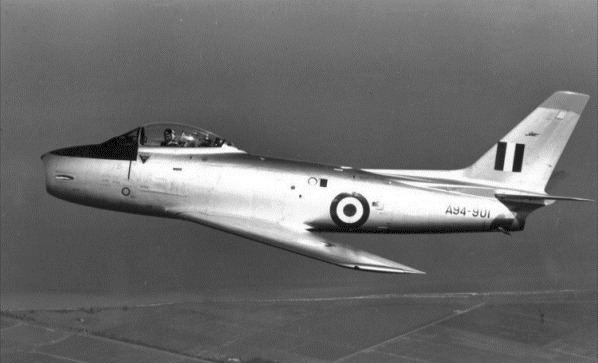 | ||
Engine types Turbojet, Rolls-Royce Avon | ||
Cac sabre
The CAC Sabre, sometimes known as the Avon Sabre or CA-27, is an Australian variant of the North American Aviation F-86F Sabre fighter aircraft. The F-86F was redesigned and built by the Commonwealth Aircraft Corporation (CAC). Equipping five RAAF squadrons, the type saw action in the Malayan Emergency in the late 1950s, and was employed for air defence in Malaysia and Thailand in the 1960s. Ex-RAAF models also saw service with the Royal Malaysian Air Force and the Indonesian Air Force.
Contents
- Cac sabre
- Cac sabre fast pass followed by gloster meteor and de haviland vampire avalon 2011 raw
- Development
- Operational history
- Variants
- Operators
- Specifications Mk 32
- References
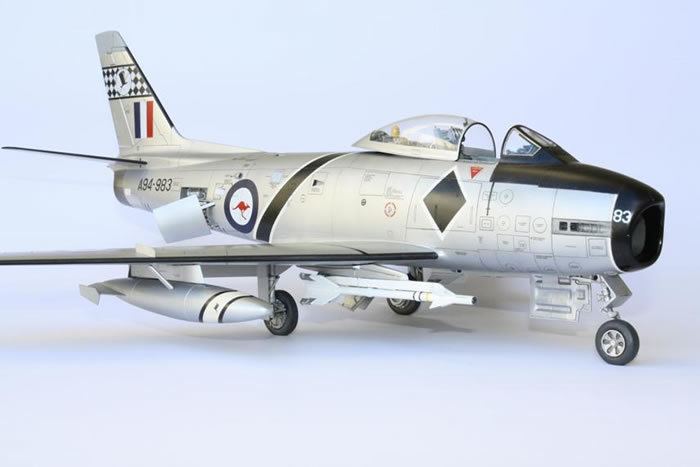
Cac sabre fast pass followed by gloster meteor and de haviland vampire avalon 2011 raw
Development
In 1951, CAC obtained a licence agreement to build the F-86F.
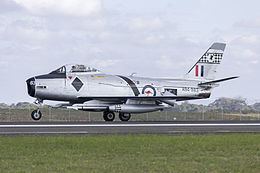
In a major departure with the North American blueprint, it was decided that the CA-27 would be powered by a licence-built version of the Rolls-Royce Avon R.A.7, rather than the General Electric J47. In theory, the Avon was capable of more than double the maximum thrust and double the thrust-to-weight ratio of the J47. This necessitated a re-design of the fuselage, as the Avon was shorter, wider and lighter than the J47. Over 60 percent of the fuselage was altered and there was a 25 percent increase in the size of the air intake. Because of the engine change the type is sometimes referred to as the "Avon Sabre".
CAC engineers made two other major alterations to the F-86F design:
Changes were also made to the cockpit layout and to provide
A prototype, given the CAC designation CA-26 001 (A94-101), flew for the first time on 3 August 1953.

Production Sabres were designated CA-27 and the first deliveries to the Royal Australian Air Force began in 1954, with the RAAF serial prefix A94. The first batch of aircraft, powered by the Avon 20, were designated CAC Sabre Mk 30. Between 1957 and 1958 the wing slats of these aircraft were removed, after which the type was redesignated Mk 31. These Sabres were supplemented by 20 new aircraft, built to Mk 31 standard. A third and final block of 69 Sabres, with the Avon 26 engine and completed in 1961, were given the designation Mk 32.
Operational history
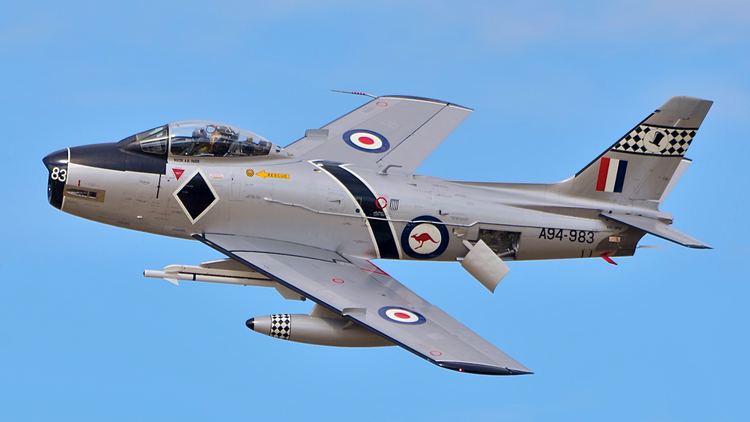
The RAAF operated the CA-27 from 1954 to 1971. The Aircraft Research and Development Unit received the first example in August 1954; it was delivered to No. 2 (Fighter) Operational Training Unit (subsequently No. 2 Operational Conversion Unit) in November. Over the next six years the Sabres progressively equipped Nos. 75, 3, 77 and 76 Squadrons.
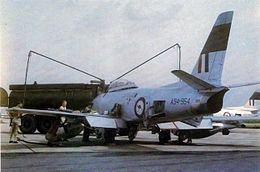
From 1958 to 1960, CAC Sabres of No. 78 Wing, comprising Nos. 3 and 77 Squadrons, undertook several ground attack sorties against communist insurgents in Malaya, during the Malayan Emergency. Following the Emergency, they remained in Malaysia at RAAF Butterworth. Armed with Sidewinder missiles, the Sabres were responsible for regional air defence during the Konfrontasi between Indonesia and Malaysia from 1963 until 1966, though no combat took place. Between October and December 1965, a detachment of six Sabres, initially from No. 77 Squadron and later from No. 3 Squadron, was based at Labuan to conduct combat patrols over the Indonesian–Malaysian border on Borneo.
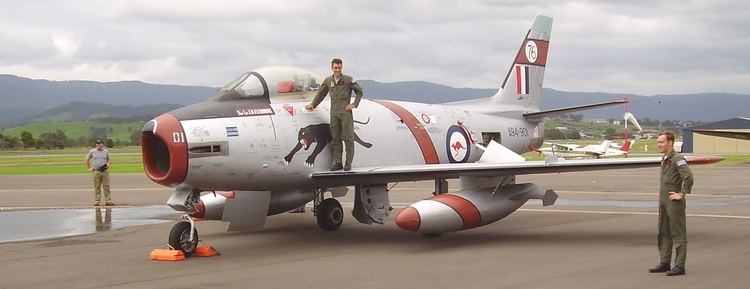
In 1962, a detachment of eight CAC Sabres, which was later expanded and designated No. 79 Squadron, was sent from Butterworth to RAAF Ubon, Thailand, to assist the Thai and Laotian governments in actions against communist insurgents. Australia and Thailand were allies of South Vietnam and the United States during the Vietnam War; No. 79 Squadron was responsible for local air defence at Ubon, where United States Air Force attack and bomber aircraft were based. The squadron never engaged North Vietnamese aircraft or ground forces. Two Sabres were lost to engine failure in Thailand, in September 1964 and January 1968. No. 79 Squadron ceased operations and was deactivated in July 1968.
The RAAF began re-equipping with the Dassault Mirage III in 1964. The last Sabres in Australian service, operated by No. 5 Operational Training Unit, were retired in July 1971.
Former RAAF CAC Sabres were operated by No. 11 Squadron of the Royal Malaysian Air Force (TUDM) between 1969 and 1972. Following the establishment of better relations with Indonesia, 23 CAC Sabres were donated to the Indonesian Air Force (TNI-AU) between 1973 and 1975, and operated by No. 14 Squadron; five of these were former Malaysian aircraft.
In Australia one aircraft, RAAF-owned Sabre A94-983, has been restored to flying condition, and takes part in displays at the Temora Aviation Museum, New South Wales.
Variants
Operators
Specifications (Mk 32)
Data from Meteor, Sabre and Mirage in Australian Service
General characteristics
Performance
Armament
